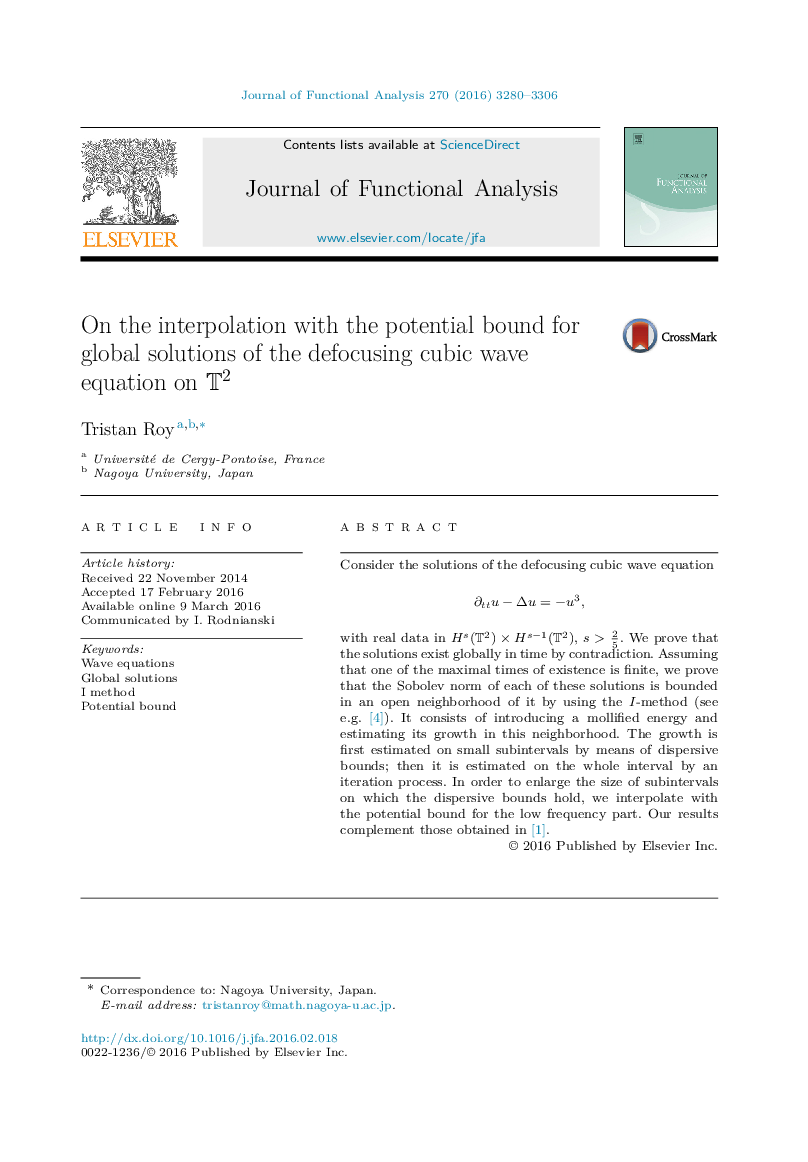| Article ID | Journal | Published Year | Pages | File Type |
|---|---|---|---|---|
| 4589753 | Journal of Functional Analysis | 2016 | 27 Pages |
Consider the solutions of the defocusing cubic wave equation∂ttu−Δu=−u3,∂ttu−Δu=−u3, with real data in Hs(T2)×Hs−1(T2)Hs(T2)×Hs−1(T2), s>25. We prove that the solutions exist globally in time by contradiction. Assuming that one of the maximal times of existence is finite, we prove that the Sobolev norm of each of these solutions is bounded in an open neighborhood of it by using the I-method (see e.g. [4]). It consists of introducing a mollified energy and estimating its growth in this neighborhood. The growth is first estimated on small subintervals by means of dispersive bounds; then it is estimated on the whole interval by an iteration process. In order to enlarge the size of subintervals on which the dispersive bounds hold, we interpolate with the potential bound for the low frequency part. Our results complement those obtained in [1].
